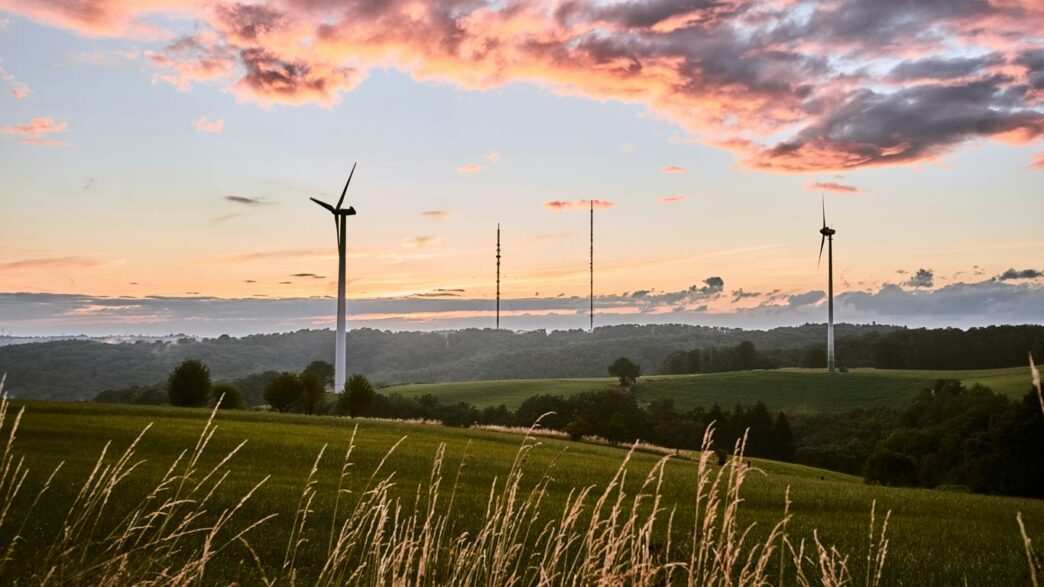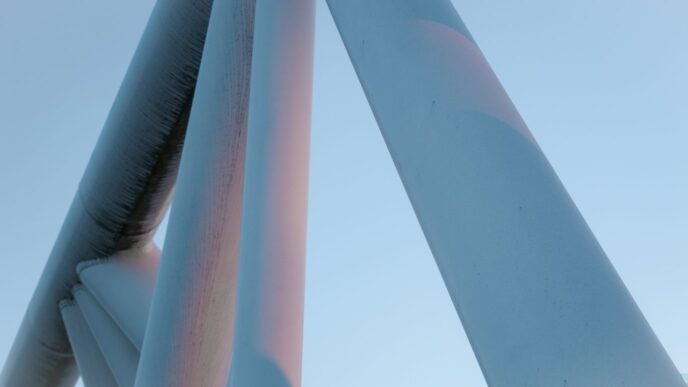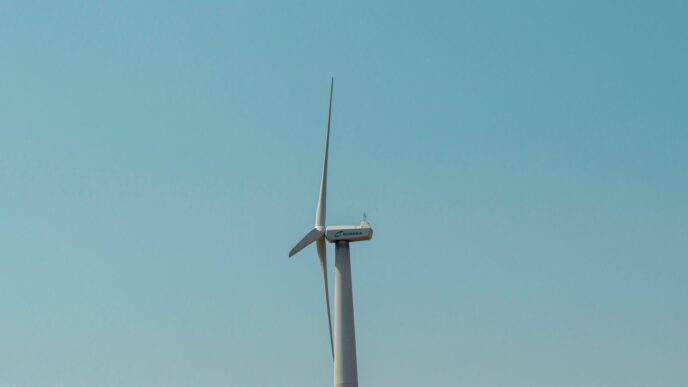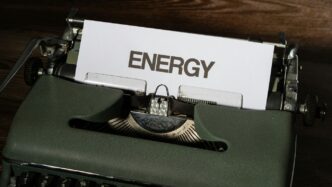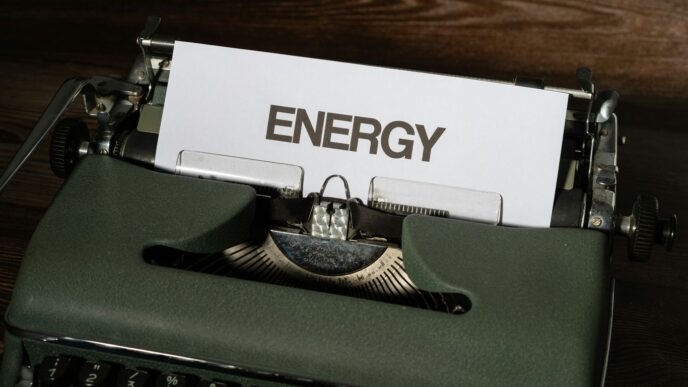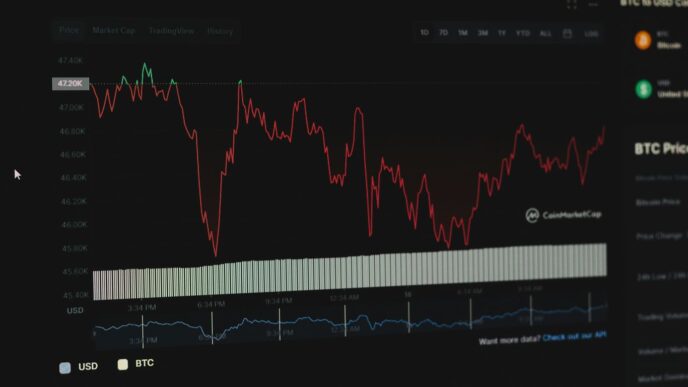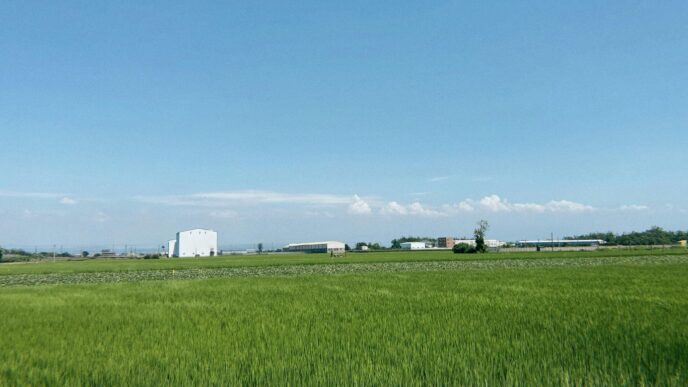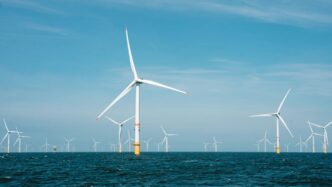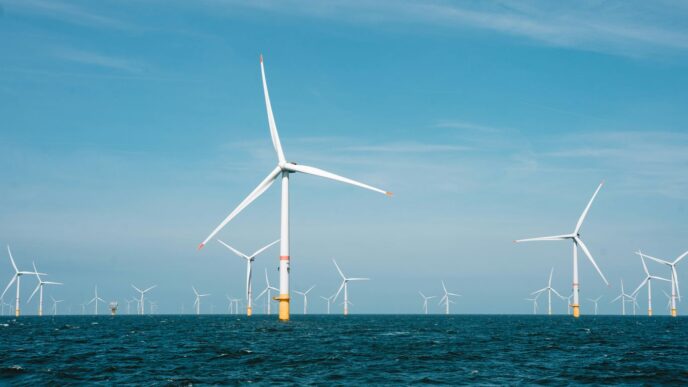Illinois is making some big moves when it comes to green energy. It feels like just yesterday we were still mostly relying on old-school power sources, but things are changing fast. The state has been pushing for cleaner energy options, and it’s creating new opportunities and changing how we think about power. Let’s take a look at where Illinois is with its renewable future and what that means for everyone.
Key Takeaways
- Illinois has a history of environmental action, starting with its own Environmental Protection Act in 1970, but it took until the early 2000s to really focus on renewable energy goals.
- Wind energy is a major player in Illinois’s renewable energy mix, with the state being a top producer nationally, but solar power is growing quickly too.
- New laws like the Climate and Equitable Jobs Act (CEJA) are pushing Illinois toward cleaner energy, aiming for zero emissions from power plants and boosting renewable energy investments.
- The shift to green energy is creating jobs in areas like energy efficiency and advanced transportation, showing that sustainability can also mean economic growth.
- Residents and communities can get involved and benefit from renewable energy through various state and federal incentives, utility programs, and financing options.
Illinois Green Energy: A Historical Perspective
Early Environmental Efforts and Shifting Priorities
Illinois has a longer history with environmental protection than with renewable energy, believe it or not. Back in 1970, the state was actually the first in the U.S. to set up its own Environmental Protection Act. That was a big deal for cleaning up pollution and protecting natural resources. But for a long time, the focus stayed on traditional environmental issues, and renewable energy wasn’t really on the radar. It wasn’t until the early 2000s that things started to shift. The state began to recognize the potential of wind and solar power, and the need to reduce reliance on fossil fuels.
Establishing Renewable Energy Targets and Standards
Things really started moving in 2001 when Illinois set its first voluntary goals for using renewable energy. They aimed for 5% by 2010 and 15% by 2020. Then, in 2007, the state got more serious and put in place an official Renewable Portfolio Standard (RPS). This meant utilities had to gradually increase the amount of renewable energy they supplied, with a target of 25% by 2025. A good chunk of that was supposed to come from wind, with a smaller but growing piece from solar.
Around the same time, there was also a push for energy efficiency. Laws were passed to set standards for how efficient buildings should be, both for businesses and homes. Utilities were also required to help customers use less energy overall. It was a multi-pronged approach to greening the state’s energy use.
The Impact of the Future Energy Jobs Act
Fast forward to 2016, and Illinois passed the Future Energy Jobs Act (FEJA). This was a pretty significant piece of legislation. It put over $750 million into programs, especially in lower-income areas, with a big focus on renewable energy development. One of the key things FEJA did was establish the state’s community solar program, which opened up solar energy access to more people and businesses. It really helped to accelerate the growth of clean energy projects across the state.
Current Renewable Energy Landscape in Illinois
Illinois has really stepped up its game when it comes to renewable energy. For a long time, we were known for other things, but now, the Prairie State is becoming a major player in clean power. It’s pretty cool to see how much has changed, especially with wind and solar.
Wind Energy Dominance and Growth
Wind power is a big deal here. Illinois is actually one of the top states in the country for wind energy production. We’ve got a lot of large wind farms up and running, contributing a significant chunk of our electricity. It’s impressive how much power these turbines can generate, and it’s a key part of our move away from dirtier energy sources.
The Rise of Solar Power Capacity
While wind might be the current leader, solar power is growing super fast. We’re seeing more and more solar panels popping up, not just on big farms but on individual homes and businesses too. The state has set some ambitious goals for solar, and it feels like we’re on track to meet them. It’s great to see this technology becoming more accessible.
Biofuel Production and Contribution
Beyond wind and solar, Illinois is also a major producer of biofuels. Thanks to our strong agricultural roots, we turn a lot of corn and soybeans into ethanol and biodiesel. These fuels play a role in our overall renewable energy mix, helping to reduce our reliance on traditional fossil fuels in transportation and other areas.
Policy and Legislation Driving Illinois’s Green Future
Illinois has been busy making laws to help green energy grow. It’s not just about setting goals anymore; it’s about making them happen with real rules and support.
The Climate and Equitable Jobs Act (CEJA)
This is a big one, passed in 2021. CEJA is all about making sure the move to clean energy is fair for everyone. It’s pushing fossil fuel plants to stop polluting by 2045. Plus, it’s doubling the money put into renewable energy projects and setting up programs to help workers from the old energy jobs find new ones in the green sector. They’re also making it easier to buy electric cars with new rebates and more charging stations.
Renewable Portfolio Standard Updates
Illinois has had a Renewable Portfolio Standard (RPS) for a while, which is basically a rule saying utilities have to get a certain percentage of their power from clean sources. The goals have been getting higher over the years. The latest push, especially with CEJA, is aiming for 50% renewable energy by 2040. This is a pretty ambitious target, and it means a lot more wind and solar power will be needed.
Carbon Emission Reduction Mandates
Beyond just renewables, Illinois is also focused on cutting down on carbon emissions overall. CEJA includes requirements for power plants to reduce their emissions significantly, with the ultimate goal of zero emissions by 2045. This means older, dirtier plants will either have to make major upgrades or shut down, pushing the state towards cleaner electricity generation.
Here’s a quick look at some key targets:
- Fossil Fuel Plant Emissions: Must reach zero by 2045.
- Renewable Energy Goal: Aiming for 50% of electricity from renewables by 2040.
- Investment: Doubling state investment in renewable energy initiatives.
These laws are designed to create a clear path forward for clean energy in Illinois, making sure the state meets its environmental goals while also thinking about the people and communities affected by this shift.
Economic Opportunities in Illinois’s Renewable Sector

Thinking about the future of energy in Illinois really brings up a lot of interesting possibilities, especially when it comes to jobs and the economy. It’s not just about saving the planet anymore; it’s about building a stronger, more sustainable economy right here in the Prairie State.
Job Creation in Energy Efficiency
When we talk about green energy, a lot of people immediately think about solar panels or wind turbines. But there’s a huge area that’s often overlooked: energy efficiency. This is all about making our buildings and homes use less energy in the first place. Think about better insulation, smarter thermostats, and more efficient lighting. These upgrades don’t just save people money on their utility bills; they create jobs for local contractors, installers, and inspectors. It’s a solid way to boost employment without needing massive new infrastructure.
Growth in Advanced Transportation and EVs
Another big area of opportunity is in how we get around. Electric vehicles (EVs) are becoming more common, and Illinois is looking to be a part of that growth. This means jobs in manufacturing charging stations, maintaining EV fleets, and even developing new battery technologies. Plus, as more people switch to EVs, it reduces our reliance on fossil fuels, which has its own economic benefits in the long run. It’s a shift that’s happening globally, and Illinois has a chance to get ahead of the curve.
Employment in the Solar Industry
Solar power is really taking off in Illinois, and that means jobs. We’re seeing growth in everything from manufacturing solar panels (though much of that is still done elsewhere) to installing them on rooftops and in large solar farms. There are also jobs in sales, design, and maintenance. The solar industry in Illinois has been steadily growing, providing a significant number of jobs across various skill levels. It’s a sector that’s directly tied to the state’s renewable energy goals, so as those goals get bigger, so do the job opportunities.
Here’s a quick look at how many people were working in clean energy in Illinois:
| Sector | Number of Employees (End of 2021) |
|---|---|
| Clean Energy (Overall) | 120,775 |
| Percentage of Total Energy | Over 40% |
This shows that clean energy isn’t just a small niche; it’s becoming a major part of Illinois’s overall energy workforce.
Community Engagement and Advocacy for Green Initiatives

You know, it’s easy to think of big policy changes and massive solar farms when we talk about green energy. But honestly, a lot of the real magic happens right in our own neighborhoods. It’s about people getting together, talking, and actually doing things to make our communities cleaner and more sustainable.
Grassroots Efforts for Solar Projects
This is where things really get rolling. Think about your local neighborhood or town. People are starting to organize, often without a huge budget or fancy office. They’re holding meetings at the library or a community center, just trying to figure out how to get more solar panels on rooftops. Sometimes, they band together to buy solar equipment in bulk, which can really bring down the cost for everyone involved. It’s like a neighborhood potluck, but for clean energy. These kinds of local efforts are what truly drive widespread adoption. They make renewable energy feel accessible, not just something for big corporations.
Building Local Partnerships for Sustainability
Nobody can do this alone, right? That’s why teaming up with others is so important. It’s not just about homeowners; it’s about getting local businesses on board, maybe they can sponsor a community solar garden or offer discounts. Schools can get involved too, teaching kids about why this stuff matters. Even working with the folks who plan our towns is key, making sure new green projects fit in and actually help the community. It’s all about finding common ground and making sure everyone benefits.
Here’s a quick look at who you might want to connect with:
- Local Businesses: For sponsorships, in-kind donations, or even adopting green practices themselves.
- Schools and Universities: To integrate environmental education and potentially host workshops.
- Municipal Leaders: City council members, zoning boards, and planning departments to align projects with local regulations and goals.
- Neighborhood Associations: To reach residents directly and understand local concerns.
The Role of Environmental Organizations
We’ve got some really dedicated groups here in Illinois that are like the seasoned pros of green advocacy. Organizations like the Environmental Law & Policy Center or the Citizens Utility Board, they know the ins and outs of all the rules and regulations. They can help communities understand complex contracts, figure out the best way to approach the utility companies, and generally offer solid advice. Having them in your corner can make a huge difference when you’re trying to get a project off the ground. They’ve seen a lot of success stories, and they’re happy to share what they’ve learned, which is pretty awesome when you think about it.
Incentives and Support for Illinois Residents
Thinking about making your home or business greener in Illinois? You’re in luck, because the state and federal governments, along with local utilities, have put together a bunch of programs to help make it easier and more affordable. It can feel a bit overwhelming at first, trying to figure out what’s available, but there are some solid options out there.
State and Federal Tax Credits
One of the biggest helpers is the federal Solar Investment Tax Credit (ITC). Basically, if you install a solar energy system, you can claim a significant portion of the cost back on your federal taxes. Right now, that’s a 30% credit, which can add up to thousands of dollars for the average homeowner. This is a pretty sweet deal that’s set to continue for a while, though the percentage might change down the road. On top of that, Illinois has a law that says the value added to your home by a solar panel system won’t increase your property taxes. So, you get the benefit of a more valuable home without the extra tax burden.
Utility Rebates and Programs
Your local utility company is another place to look for savings. Major players like ComEd and Ameren Illinois often have programs that offer rebates for energy-efficient upgrades. This could include things like new appliances, better insulation, or even solar panel installations. They also have specific programs designed to help with renewable energy projects. It’s worth checking their websites or giving them a call to see what’s currently on offer. Sometimes these rebates can make a big difference in the upfront cost of going solar or making other energy improvements.
Financing Options for Energy Improvements
For bigger projects, financing can be a hurdle. Illinois offers programs like Property Assessed Clean Energy (PACE) financing. This lets you pay for energy improvements through your property taxes over a long period, often with low interest rates. It’s a way to spread out the cost so it’s more manageable. For those who qualify, the Illinois Solar for All (ISFA) program is a fantastic option. It helps low-income households get solar power with no money down. Participants essentially share the energy credits generated by their system to cover the costs. The Illinois Shines program also plays a big role by providing incentives to solar vendors, which can then be passed on to you, the customer. They help connect you with approved vendors and explain the financial side of things, including how Renewable Energy Credits (RECs) work.
Technical Resources for Renewable Energy Projects
Getting a renewable energy project off the ground in Illinois can feel like a big undertaking, but thankfully, there are plenty of resources available to help you out. It’s not just about slapping some panels on a roof; there’s a whole ecosystem of support designed to make the process smoother, from the initial idea to flipping the switch.
Expert Consultation and Workshops
Sometimes you just need to talk to someone who knows their stuff. Organizations like the Illinois Solar Energy Association (ISEA) are fantastic for this. They offer consultations and run workshops that cover everything from figuring out the best system for your needs to understanding the permits you’ll need. It’s like having a guide for the whole journey. They can help you plan your project, figure out the technical details, and even connect you with certified professionals. Plus, attending these workshops is a great way to meet other folks who are doing similar things, which can be super helpful for sharing tips and learning from each other’s experiences.
Energy Assessments and Management Strategies
Before you invest a lot of money, it’s smart to know exactly where you stand. The Smart Energy Design Assistance Center (SEDAC) is a great place to start. They can come in and do a free energy assessment, looking at your current energy use and figuring out where you can make the biggest improvements. This isn’t just about solar panels; they can help with all sorts of energy efficiency measures. Based on their findings, they can help you develop a strategy for managing your energy use more effectively over the long term. This kind of planning helps make sure your renewable energy investment really pays off.
Utility Support for Grid Interconnection
Connecting your new renewable energy system to the existing power grid might sound complicated, and honestly, it can be. But your local utility companies, like ComEd and Ameren Illinois, have dedicated teams to help with this. They can guide you through the requirements for connecting your system, explain the technical standards you need to meet, and help you understand how things like net metering will work. Getting this part right is key to making sure you can actually send excess power back to the grid and get credit for it. Don’t try to figure this out alone; reach out to their renewable energy departments early in your planning process.
Looking Ahead for Illinois Green Energy
So, Illinois has come a pretty long way, right? From setting early environmental rules way back when to now pushing hard for wind and solar power, it’s clear the state is serious about a cleaner future. With new laws and programs like Illinois Shines, there are more ways than ever for folks and businesses to get involved and save some money too. While there’s still work to do to hit those big renewable energy targets, the momentum is definitely building. It feels like we’re on the right track to a greener Illinois, powered by smart choices and community effort.


